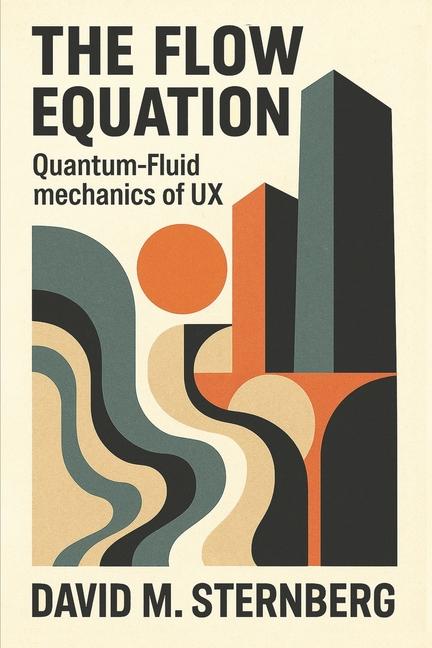Description
What if we stopped designing products like gamblers and started shaping experiences like physicists?
There are far too many products that are launched with guesswork. Built on hunches and validated after the fact. We call it "ship and learn" - but if we're honest: it's guess, ship, pray, and patch.
This book introduces a radically different approach based on a first-of-its-kind theory called QFIT - Quantum-Fluidic Interaction Theory. And it does something no design model has ever done before: it predicts behavior.
QFIT is a fusion of quantum mechanics, fluid dynamics, psychology and behavioral economics, not as metaphor, but as method. It treats user experience like a field of forces. It models intent as a probability wave. It turns cognitive friction, motivation, and attention into variables you can simulate. Not just observe. And it introduces something even bigger: Utorics - a new scientific discipline built to understand human behavior in digital systems with the precision of physics.
Why This Matters
Design today is intuitive. It's emotional. It's practiced like art. But the systems we build for are no longer simple. They're dynamic, adaptive, intelligent. Our current tools, heuristics, patterns, best practices, they're not enough anymore. They describe what works, but not why it works. And definitely not what comes next.
This book offers a new way to see user experience:
- As fluid - with momentum, viscosity, turbulence.
- As quantum - where intent exists in superposition until collapsed into choice.
- As systemic - not a sequence of screens, but an evolving interaction field.
What You'll Find Inside
- Groundbreaking methodologies for modeling UX behavior using physics.
- Predictive models for friction, drop-off, motivation, and cognitive load.
- Simulation and design methods that move beyond trial-and-error.
- A new scientific language for designers, engineers, and behavioral scientists.
- A complete reframing of UX - from reactive practice to predictive discipline.
Great design isn't just what it looks like or feels like. It's how it works. This book is about understanding how it works - before you ship.
The Goal of This Book
Design, at its best, is intuitive. It dances between creativity and empathy, marrying function to feeling. For decades, UX has drawn its power from this intuition - honed through practice, tested through iteration, and grounded in heuristics. But for all its progress, the field of user experience has remained mostly descriptive: it tells us what tends to work, not why it works - or how it might behave under different conditions.
Today, we stand at the edge of a paradigm shift. A moment of convergence. Behavioral science, complexity theory, quantum computation, cognitive psychology, and physics are no longer distant cousins to design - they are potential collaborators in a deeper understanding of human-system interaction.
A Paradigm Shift in UX Practice
Current UX practice is dominated by design patterns, usability guidelines, and behavioral shortcuts. These tools are valuable but immensely limited. They work well in simple or controlled environments. Yet as our systems become more complex, adaptive, and intelligent, these tools begin to fray.
- What happens when the user's journey isn't linear?
- When attention fragments mid-interaction?
- When emotion, fatigue, or motivation shift in real-time?
- When multiple users or agents interact in overlapping flows?
Our current toolbox doesn't always help us understand these dynamics - let alone predict them. Quantum-Fluidic Interaction Theory (QFIT) proposes a new way of seeing and modelling user experience that can save your team valuable time and money and help you build incredibly efficient user experiences.
Product Details
- Jul 1, 2025 Pub Date:
- 9798287115852 ISBN-10:
- 9798287115852 ISBN-13:
- English Language




